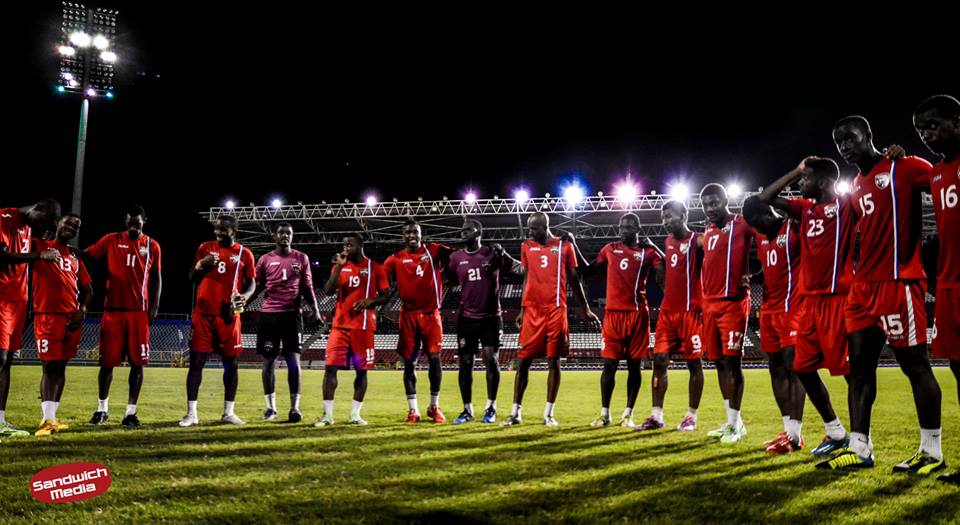One of the most interesting features of analyses on football matches is to hear the comments coming from the coaching staff after a match is completed.
Because of the fact that the game against Panama on Friday was just a friendly and mattered not as to the relevance of the result, it is necessary for the coach to indicate his own feelings and interpretation regarding the satisfaction or lack of it by his players.
Having seen the interview given by Stephen Hart straight after the game, will surely give us all an idea as to his reaction of what he saw of his team.
Because TV interviews are sometimes very short, it was difficult to figure out whether Stephen was saying that he was very pleased, not so pleased or accepted the learning curve which the defeat gave to the team.
His diplomacy could well have been a comfort zone for his young players, a request for patience from the fans, and most of all, the consolatory relief for the anxious fans, whose main focus is to see the quality of football that this team can produce in three months’ time.
Statistically, anyone who saw the game, could not claim that they were satisfied with the fact that in 90 minutes, there was but one shot taken at the opponents’ goal. The percentage in possession of the ball in the game was a mere 38 per cent, as opposed to the Panamanians 62.
Admittedly, this particular detail does not necessarily mean that there should have been more goals by the team with greater possession.
What it does mean is that the warrior’s inability to dispossess their opponents deprived them from creating much goal scoring chances of their own.
Here was a visiting team which strength was clearly to dominate the midfield through a mixture of short crisp passing among four midfielders, shifting their positions, laterally and diagonally in order to disallow the locals to get close to regaining possession.
What that policy actually succeeded in doing was breaking the communication lines between the Warriors central defenders and leaving space for some vacancies for passing lanes which found chances created in and around the penalty area.
Strangely enough, the individual performances of both Sheldon Bateau and Mekeil Williams were technically good and their agility made up for the times when they were forced into poor covering positions.
Hart was right when he referred only to the last five minutes of the first half as good play by his team. Prior to that, the inexperience of players like Tyrone Charles, Neveal Hackshaw, and Shannon Gomez, not well supported by the more matured players like Khaleem Hyland, Ataullah Guerra, Kevin Molino and Justin Hoyte, deprived them of making full use of the opportunity given them to show their worth.
Despite Hoyte’s ability to defend well at times, he was easily drawn from the wingback position and allowed the opponents to travel the right flank and cross some dangerous services, one which was neatly headed past the keeper amidst a non-marking central defence.
The solitary goal had opened the door for Panama to capitalise, but their crosses brought three other headers, two of which needed to be saved by goalkeeper Marvin Phillip.
Recognising the vast experience of the Panama team and knowing their recent track record, I understood the complex state in which our team was challenged for keeping a well-balanced defence line.
Thanks to the national Under-20 captain Gomez, he stood out in terms of positional play, choice of passes, and decisions when in defence, to usher the flank runners to go towards restricted space between himself and the touchline.
Our selected engine room which consisted Hyland and Hackshaw, won the ball occasionally in midfield, but certainly too close to the final third of the field, causing Molino to receive the ball in his own half of the field, where there was too much traffic for him to use his scoring ability.
To be a heavy critic on this team will not serve the purpose of exposing the young players, but it requires some talking to the more advanced players, especially my favourite player Guerra, who was nonproductive most times.
Despite the substitutions by both teams in the second half, the game fell asleep and apart from a powerful drive by Codoy from near forty metres which struck the crossbar before the keeper could wink, there was very little from either side that helped keep the fans awake.
The picture is now much clearer. We must intensify the training sessions, increase the level of fitness of the players and most of all, coach Hart must decide upon strategy depending upon his opponents.
It is a task that may be possible, especially when players like Lester Peltier, Hughtun Hector, Carlyle Mitchell, Daneil Cyrus, Kenwyne Jones, Joevin Jones, and Aubrey David join the ranks.
If Hart has to continue to use these youngsters, they must be allowed to train together at least one day per week until the overseas players join them.
A few friendly matches will make a huge difference for the specific purpose of developing cohesiveness, through basic tactical patterns. This is our worst problem, hence the reason why the most attention must be made to correct it.
Structure is needed in our national teams. All of them, the juniors, the women and our senior team. We must find defensive methods which will help to win the ball, rather than just hope that the opponents make unforced errors in their passing.
The three months must be well spent and we must show improvement before we leave these shores for the Gold Cup.

